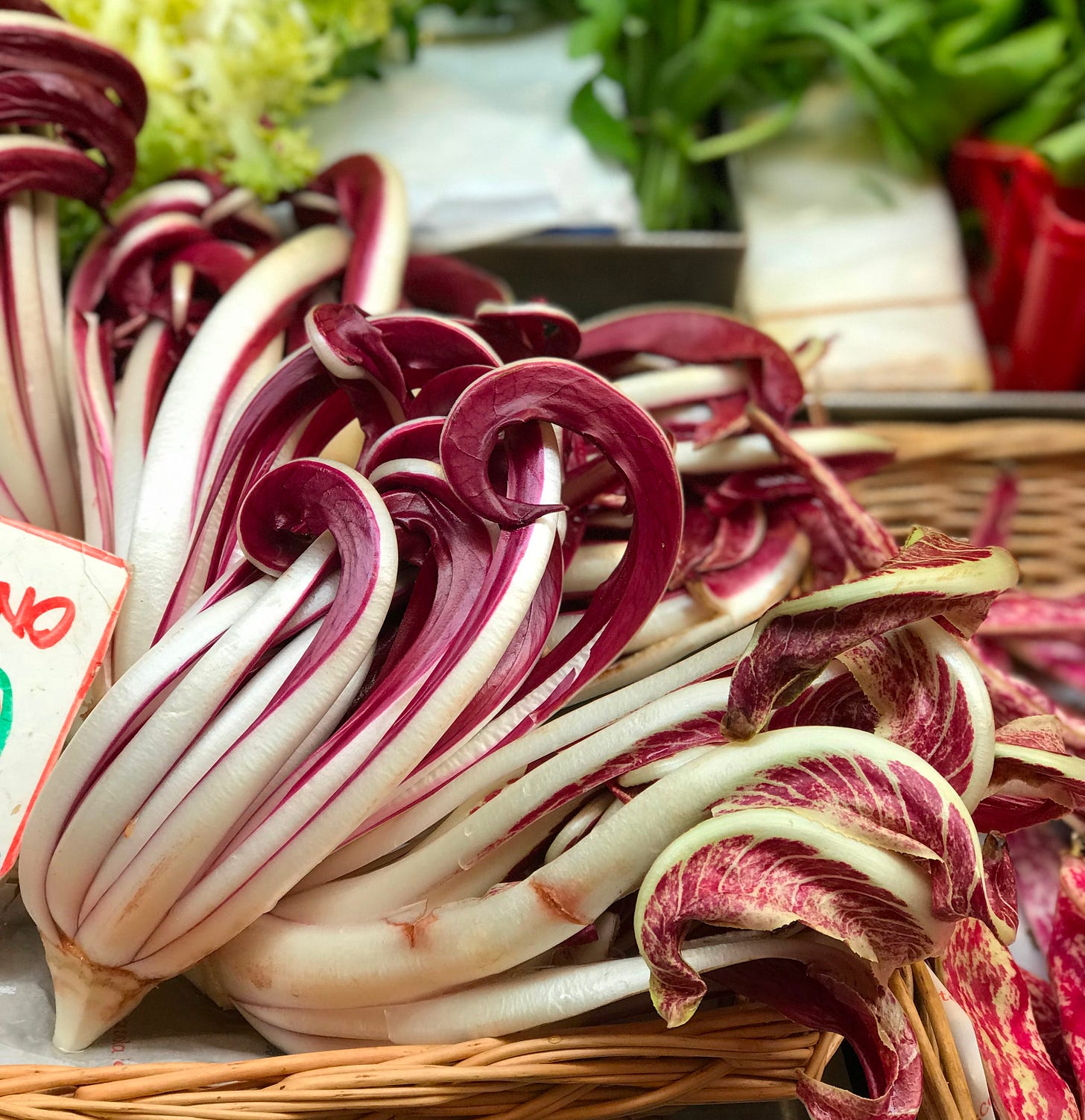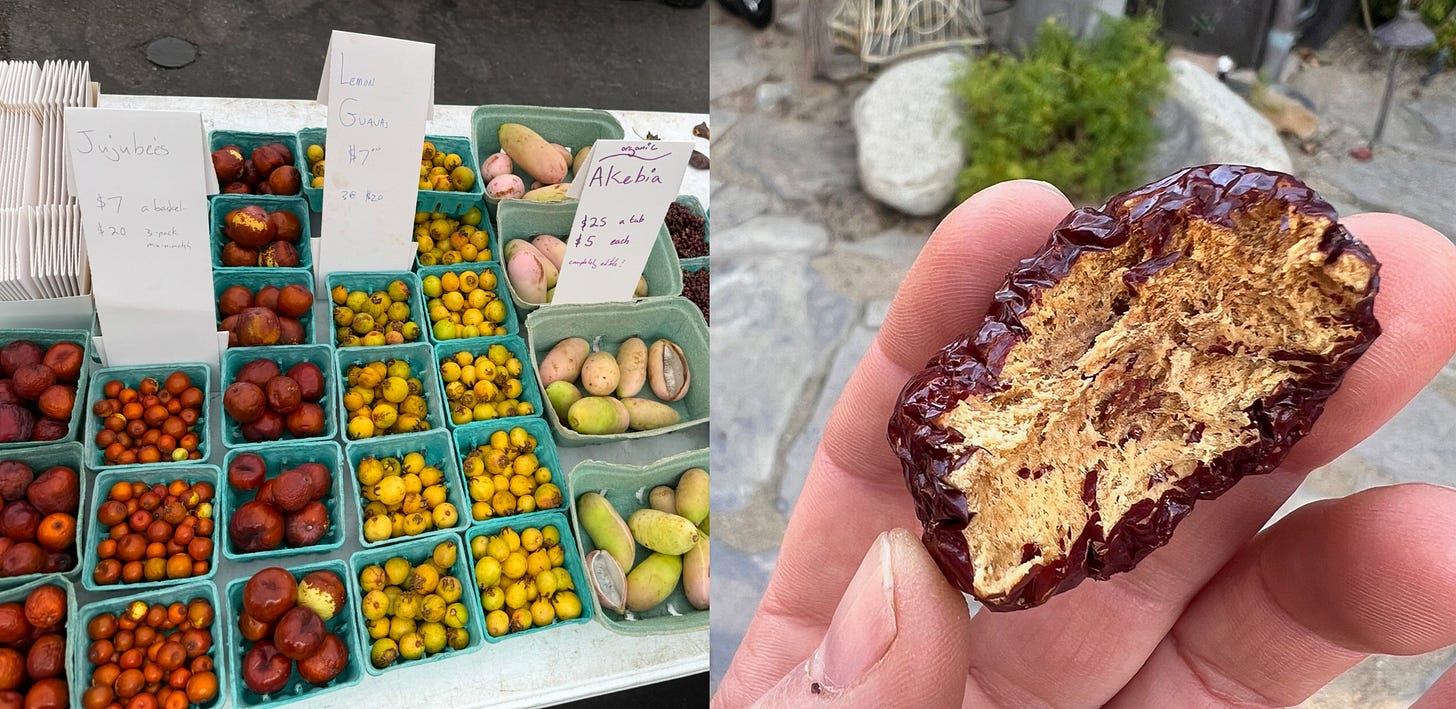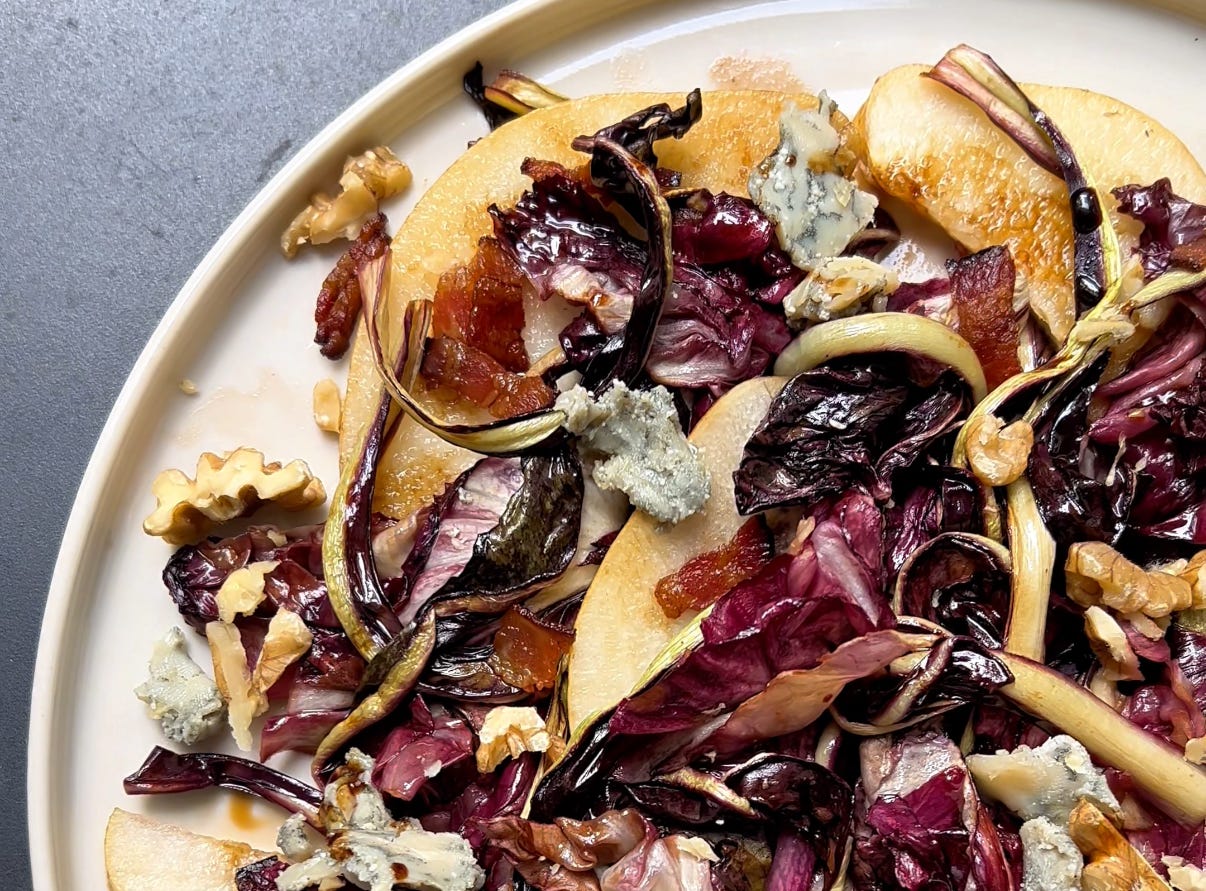I am writing from our third location in one week (thank you Justin Kerr for the shelter). We drive towards clean air, but we hold our breath every time we check our phones. We are donating money to friends, strangers, and firefighters, and bolstering ourselves for the work we face when we return, whenever that may be. In the meantime, I’m pouring myself into work and punishing exercise, since that seems to be the only way to pull my mind out of a swirly of scorched earth and lost memories. That, and burying my head in my son’s neck and inhaling like it is an oxygen mask. So many people have posted resources for how to help. Emily Wilson’s list on The Angel was really well done, I am reposting it here.
In the name of intermittent distraction, today’s recipe is a shining example of how I make use of meat in my cooking — I render it for all its flavor and fat, and use it as an accent to slice through bitterness and anchor acidity. The meat is rarely the main event. I beg my neighbors to save me the rendered goose fat from their Christmas bird so I can use it to cook potatoes. I make rich stocks from leftover bones (I am not above taking the carcass off your table should you serve meat), and I freeze 3-slice portions of bacon so I can break them out whenever some Swiss chard begs for it.
Bitterness is widely considered to be an acquired taste. To me, it is the most refined real estate on the surface of the tongue. I went out of my way to introduce my babies to bitter flavors early on, so they would be imprinted on their brains as friend, not foe. (Red’s first meal was puréed stinging nettles, and you can read more about that in this New Yorker article). My husband, initially a skeptic, has grown into bitter foods through my persistent exposure. Bitterness is tamed when in the oven, and layered with salty, rich, complex flavors. Acridity thrives in contrast. This recipe for wilted radicchio with bacon fat, balsamic, blue cheese, pear and walnuts is a good place to start.
If you want to know what it sounds like inside my head on a good day, play Bad Bunny’s newest album Debí Tirar Más Fotos. On a bad day (and we have had mostly bad days this week), blasting this album is guaranteed to override the software of a doom-spiraling mind. The artist with the most streams on the planet requires no introduction from a humble mom in Pasadena, but fuck, this album is the ideal soundtrack for culinary innovation.
If you’re a Latinophile like I am, read this article about how the popularity of reggaeton has inspired people to learn Spanish with a Puerto Rican accent. Historically, Puerto Rican Spanish has been maligned by other Latin American countries, so it’s a beautiful change of tides for a culture that offers some of the best music on the planet.
Native to China, the jujube fruit has been cultivated for over 4,000 years, and has more vitamin C than citrus. It’s sometimes called, “Chinese date” because when dried, it has that same uncanny caramel flavor, but much less sweet. Fresh jujubes are crisp like apple, but dried, they are chewy, with a leathery exterior and an almost foamy texture inside. It’s unlike any other fruit I can conjure.
Look for them in Chinese grocery store and herb shops, and on Korean menus in the staple Ginseng and Jujube chicken soup. I hydrate them in warm water and throw them into my granola. I boil them with ginger to make a jujube and ginger tea, and just munch on them as they are. Look for them in the farmers market if you’re on the West Coast, order them online, or head down to Chinatown where they are everywhere.
Radicchio, Bacon and Pear Salad
Keep reading with a 7-day free trial
Subscribe to Salad for President Substack to keep reading this post and get 7 days of free access to the full post archives.









